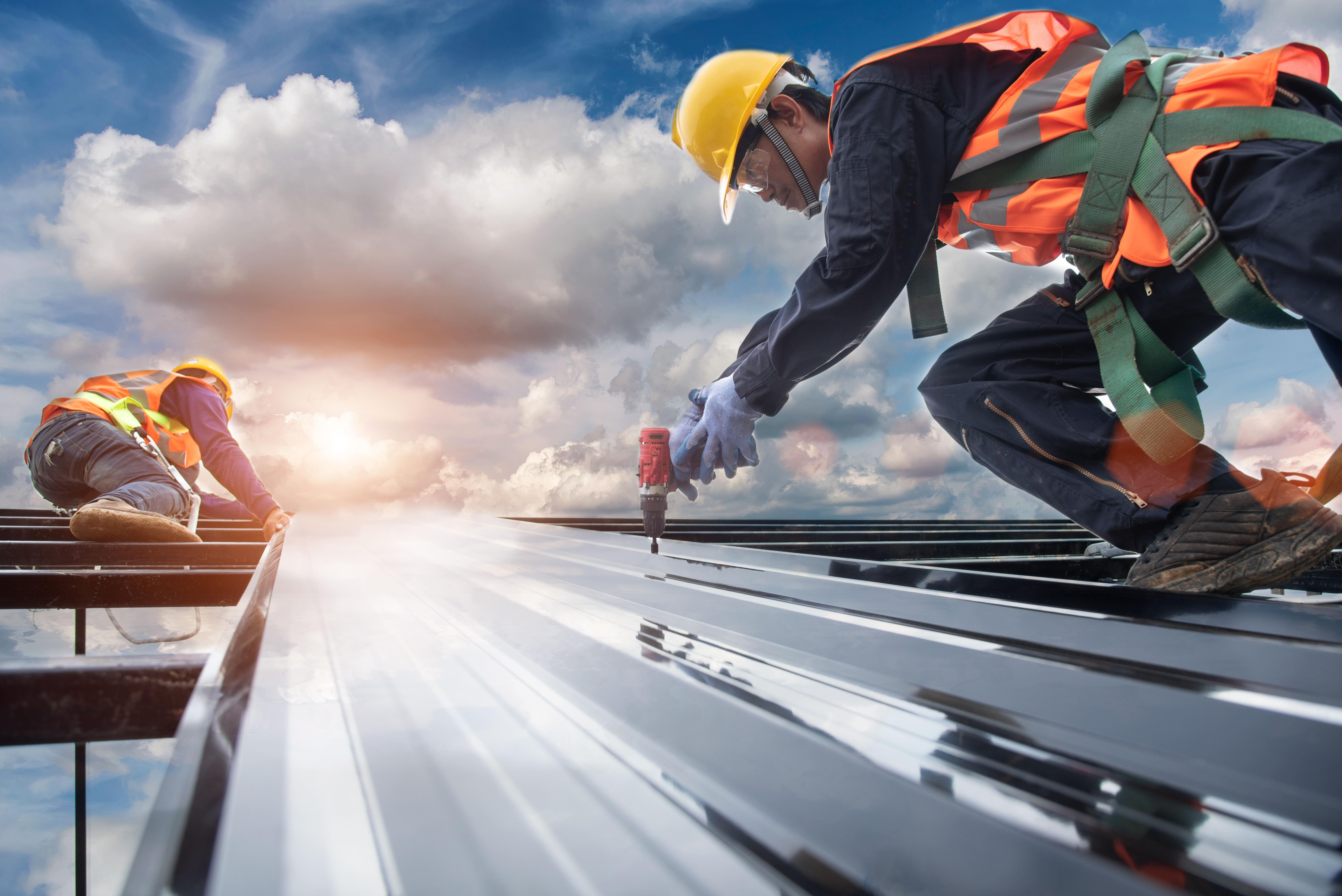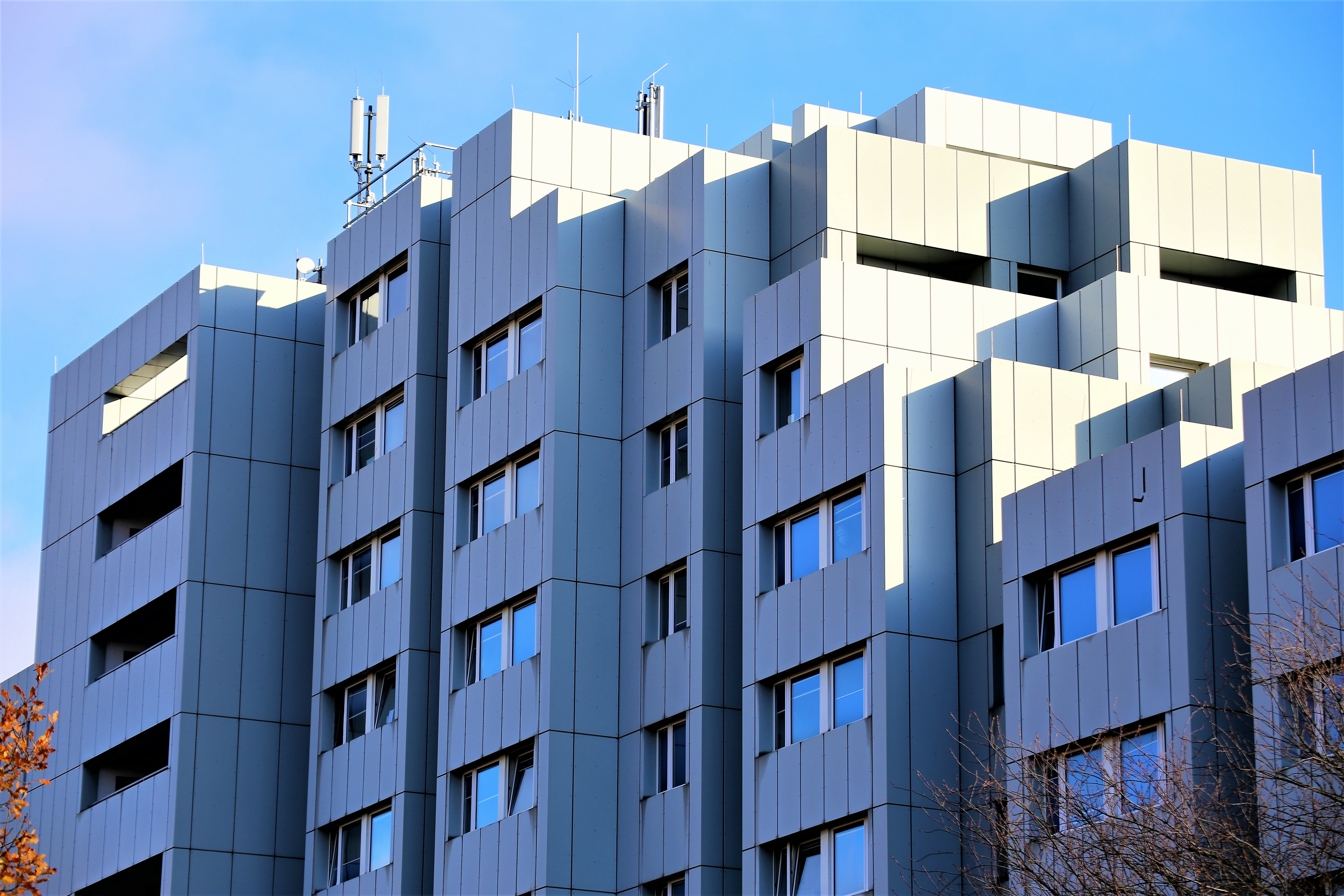Topics: CLADDING
Commercial roofing and cladding accounts for almost the entire exterior of any commercial building project. The features that make up these systems are responsible for protecting the building for a long time after it’s built, protecting everyone’s investment and preserving the building for future generations. Because these systems must do so much, and because building technology has come so far, there’s a lot that can be learned about the ins and outs of commercial roofing and cladding products.
In this guide, we’re going to plumb the depths and scale the heights of commercial roofing and cladding. We’ll talk about the kinds of products that are available for building and repairing building exteriors, how you can make sure you get the right product for the job, and how you can make sure it’s affordable for everyone involved. Exterior solutions that factor in what’s compliant and cost-effective in both the short-term and the long-term are the solutions that create successful building projects.
As you read this guide, you’ll get an overview of the different roofing and cladding topics you need to know. If you need to go more in-depth on anything, or if you have questions, we’re always here to help. Get in touch with us and we’d be happy to help you.
What to Look for in Commercial Exterior Solutions
Different exterior features and systems have a lot of properties in common, but they also serve different purposes. Knowing what you’re looking for in an effective end product is the first step to finding the right solutions for your project.
Skylights
We tend to think of roofing and wall systems as opaque, but in fact, skylights are part of both of these systems in many commercial projects. From unit skylights to translucent wall systems, these daylighting solutions are present in everything from athletic centers to office buildings. There are translucent roof systems that enable light transmission across the entirety of the roof, meaning that skylights are absolutely something to be considered when it comes to commercial roofing and cladding solutions.
Before settling on a skylight for your next project, there are some questions to ask. These will help you narrow down your options and make a decision that’s right for your project:
- What kind of roof is the skylight being installed in?
- How much natural light do you want to let in?
- Does it make more sense to use multiple skylights or a single, larger one?
- Are there insulative concerns you need to address?
- Is the skylight being installed in a building that receives a lot of weather damage? Will it need to be impact resistant?
Properties like roof pitch and thermal regulation can help you decide what you need out of a skylight, and from there you can decide what kind of daylighting you want to include in the final building. Commercial skylights come in a wide array of shapes and sizes to fit any daylighting design.
Roof System
Roofs put up with more than any other exterior building feature. After a long time they can start to show it. Although proper maintenance prolongs the life of a roof system: eventually more drastic measures may need to be taken. There are two options for saving a thoroughly damaged roof: roof recovering and roof replacement.
The primary difference between these options is what happens to the old, damaged or worn out roof. In roof recovering, new roofing materials are installed on top of the existing roof, as long as the condition of the existing roof and local building codes allow. Roof replacement involves the removal of the existing roof and the installation of an entirely new roof system.
Roof Recovering
Recovering an existing roof is much more cost-effective than replacing it: you can skip the time and labor required to rip up and dispose of old roofing materials, and you don’t expose the interior of a building to the elements while you’re working.
But not all roofs are good candidates for recovery. The ideal scenario for roof recovery is a roof that is old and worn-out: it needs to be updated and may require minor repairs, but there is no major damage. When a roof has leaked or sustained considerable damage, it’s much less likely that it can be responsibly left intact.
The most important questions to ask before recovering a roof are as follows:
- Has your roof been recovered before?
- What kinds of commercial roof repair does it need?
If the roof hasn’t already been recovered and the repairs are minor, recovery may be an option.
See How Your Roof Stacks Up
Want a second opinion on how to repair your roof? Not sure whether to go for eplacement or recovering? Try True Roof Raters free.
Let Us Help
Roof Replacement
When you can’t recover a roof, you replace it. Although modern roofing replacement is more expensive and time-consuming than recovering, it is a more long-term solution. Since a roof can only be recovered once in most cases, a newly replaced roof has the potential for a very long lifespan, until it needs to be recovered and beyond.
The best question to ask when deciding whether you need to replace your roof or not is simply “why does the roof need to be replaced?” Often the answer will tell you.
- Does your roof have extensive water damage?
- Was the roof damaged by a storm, falling objects, or some other event?
- Has the roof been recovered already?
If the answer to any of these questions is “yes,” then you will need to replace the roof. In general, building codes don’t allow for roofs to be recovered more than once without being replaced. There are problems with continually adding additional roofing layers that put undue stress on the building as well as the roofing system. A roof that has sustained damage beyond reasonable wear-and-tear is also not a candidate for recovery. Depending on the type of the roof as well as its condition and age, different replacement solutions are available.
Balancing Performance, Cost, and Appearance With Commercial Roofing and Cladding
Performance, cost, and appearance are not mutually exclusive categories that are up to different building professionals to oversee. A successful building project is able to blend these different categories seamlessly to bring an architect’s vision to life. And when done right, these qualities can support rather than detract from each other. This is actually one of the hallmarks of good design.
Cladding that consists of composite panels or other materials is already a building solution that combines these qualities. Although it brings striking aesthetic possibilities, cladding does much more by protecting the building envelope and prolonging the life of the building. Its ease of maintenance and installation also promotes cost-saving over time. But while the benefits of cladding are great, it doesn’t stop there.
Long-term costs are critical to consider when balancing the different aspects of what a building must do. Materials and features that perform at a high degree but which cost more than the very cheapest options are actually more cost-effective because they save on long-term costs. Whether that’s lowered maintenance costs, urgent repairs that won’t need to be made, or lower energy bills caused by better thermoregulation, these reduced costs compound over the decades-long lifespan of a building and create a less expensive project for everyone.
Look for the Right Kind of Roofing Vendor
With so many roofing and cladding materials available on the market, it can be hard to know where to go for the products you need. There are some qualities to look for in a vendor to help you find the right one. Some of the most important qualities are as follows:
- A strong focus on customer service
- Exceptional standards of quality
- Consistent customer satisfaction
- Innovative solutions
- A disciplined approach to doing business
- Specialists in roofing and cladding on staff
- Technical expertise
Working with a vendor of rainscreen solutions, cladding systems, or roofing products is more involved than simply buying a product. A good vendor delivers a high-quality experience and actively supports you in achieving your building goals. In this industry, vendors are your partners in developing exterior solutions.
Finding the Support You Need for Your Next Project
Good exterior solutions come from having good partners, the kind that get you the right materials for your specific job, at the right price and at the right time. Commercial building is a team effort, and Walco is the kind of partner that helps you succeed every time. We leverage our vendor relationships to create solutions you won’t find with anyone else.
We do more than anyone else to help you achieve your goals with any commercial building project. Contact us today and let us know what you’re working on.




